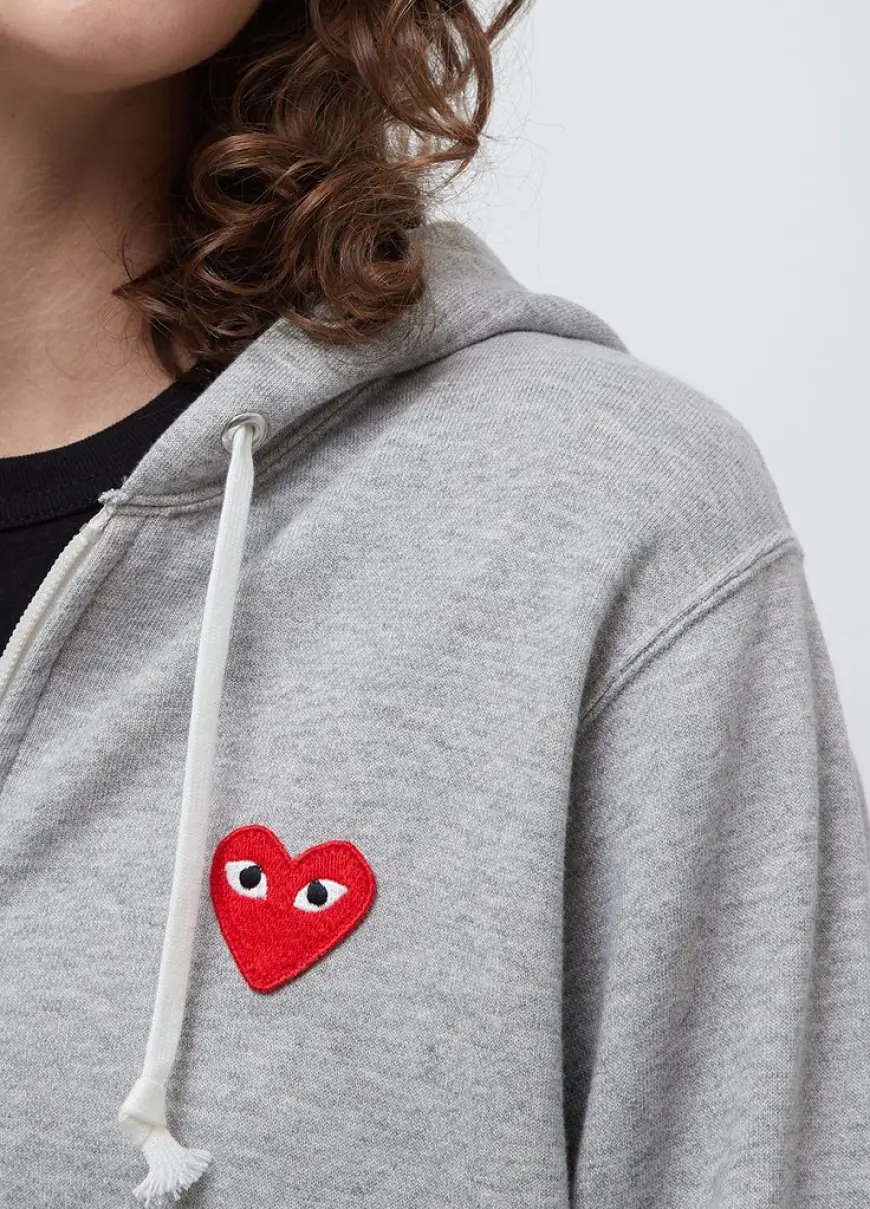The History of Comme des Garçons: A Revolution in Fashion

Introduction To Comme Des Garçons And Its Impact On The Fashion World
Comme des Garçons, a name that has become inseparable from vanguard style, addresses something other than a dress brand. It represents a development, an upheaval, and a disturbance in the customary universe of style. Established in 1969 by Rei Kawakubo, this notorious brand hails from Japan and has reliably tested customary standards, rethinking what design implies in both structure and reasoning. Comme des Garçons means "like young men" in French, a fitting name given the brand's initial investigation of sexually unbiased styles and outlines. Throughout the long term, Comme des Garçons has developed from a little Japanese mark into a worldwide style force to be reckoned with, respected and concentrated by style devotees and researchers the same for its one of a kind tasteful and unfaltering obligation to pushing limits. The historical backdrop of Comme des Garçons isn't simply a story of business achievement however an account of creative articulation and social critique. The brand has procured a religion following for its dauntless way to deal with configuration, frequently obscuring the lines among style and workmanship. Through its trying manifestations and calculated shows, Comme des Garçons has consistently started precedents while keeping an unmistakable character that resists classification. This article will investigate the rich history of the brand, its pioneer Rei Kawakubo's vision, and the various achievements that have characterized its excursion in the realm of high style.
Early Years And The Birth Of Comme Des Garçons
Rei Kawakubo, the visionary behind Comme des Garçons, was brought into the world in Tokyo, Japan, in 1942. Prior to commedesgarcon-us.com into design, she concentrated on expressive arts and writing at Keio College, an esteemed establishment known for cultivating innovativeness and scholarly thoroughness. After graduation, she started working in the publicizing branch of a material organization, where she acquired significant experiences into textures and plan. It was during this time that she found her energy for making clothing that was practical as well as a statement of distinction. In 1969, Kawakubo sent off Comme des Garçons as a little style name, at first zeroing in on ladies' clothing. Not at all like the common style of the time, which stressed womanliness and marvelousness, Kawakubo's plans were unmistakable, moderate, and frequently male/female. Her initial assortments included transcendently dark pieces of clothing with unbalanced cuts and flighty outlines, mirroring her craving to split away from customary design standards. This extreme methodology immediately grabbed the eye of Tokyo's in vogue swarm, procuring the brand a reliable following. By the mid-1970s, Comme des Garçons had secured itself as a conspicuous mark in Japan. Kawakubo's plans, portrayed by their monochromatic variety conspires and dismantled style, resounded with an age of youngsters looking for an option in contrast to standard design. The brand's prevalence kept on developing, prompting the kickoff of its most memorable store in Tokyo in 1975. Close to this time, Kawakubo likewise started planning menswear, further extending the brand's span and impact.
The Rise Of Comme Des Garçons On The International Stage
The worldwide leap forward for Comme des Garçons came in the mid 1980s when Rei Kawakubo chose to introduce her assortments in Paris, the focal point of worldwide style. In 1981, the brand made its Paris debut with a show that shocked crowds and pundits the same. Kawakubo's assortment, which highlighted larger than usual, deviated pieces of clothing in shades of dark and dim, was an unmistakable difference to the lavish and exciting plans that overwhelmed the Parisian style scene. The media immediately named the assortment as "Hiroshima stylish" because of its grave tones and troubled textures, yet regardless of the underlying shock, it denoted the start of Comme des Garçons' worldwide achievement. Kawakubo's Paris debut was critical not just in light of the fact that it acquainted the world with another stylish yet additionally on the grounds that it tested the customary thoughts of magnificence and extravagance. By embracing flaw and deconstruction, Comme des Garçons prepared for other vanguard architects to enter the standard style industry. Throughout the long term, the brand's Paris shows have become unbelievable for their drama and calculated profundity, frequently obscuring the line between design show and execution workmanship.
The Philosophy Behind Comme Des Garçons Design
At the core of Comme des Garçons' prosperity is Rei Kawakubo's one of a kind plan reasoning. Dissimilar to numerous creators who draw motivation from outer sources like workmanship, nature, or authentic periods, Kawakubo's manifestations frequently come from conceptual ideas and individual feelings. She has broadly said that she doesn't configuration garments but instead makes thoughts. This approach has brought about assortments that are outwardly striking as well as mentally animating. One of the principal qualities of Comme des Garçons' plan is its utilization of deconstruction. Kawakubo frequently explores different avenues regarding conventional article of clothing structures, dismantling them and reassembling them in flighty ways. This method brings about dress that challenges the wearer's impression of structure and capability, making a feeling of distress and interest. The brand's utilization of lopsidedness, crude edges, and capricious textures further underlines its obligation to pushing the limits of design. One more key component of Comme des Garçons' way of thinking is its dismissal of orientation standards. From its initial days, the brand has embraced bisexuality, making clothing that obscures the lines among menswear and womenswear. This approach has impacted different creators as well as added to the more extensive social discussion about orientation and personality.
Collaborations And The Expansion Of The Comme Des Garçons Empire
Comme des Garçons is additionally known for its various coordinated efforts with different brands and specialists. Throughout the long term, the brand has cooperated with many organizations, from very good quality design houses to streetwear names. These joint efforts have permitted Comme des Garçons to contact a more extensive crowd while keeping up with its cutting edge tasteful. Perhaps of the most prominent cooperation in the brand's set of experiences is its association with Nike, which started in the mid 2000s. The Comme des Garçons x Nike tennis shoes, known for their strong plans and inventive utilization of materials, have become exceptionally pursued by authorities and style devotees. Other critical coordinated efforts incorporate organizations with brands like Incomparable, Talk, and Louis Vuitton, as well as imaginative coordinated efforts with famous figures like Cindy Sherman and artificial intelligence Weiwei. Notwithstanding its coordinated efforts, Comme des Garçons has extended its realm through the send off of a few sub-marks and dissemination lines. These incorporate Comme des Garçons Homme, Comme des Garçons Shirt, and Comme des Garçons Play, every one of which takes special care of an alternate market portion while holding the brand's unmistakable stylish. The Play line, specifically, has acquired broad ubiquity for its notorious heart logo planned by Clean craftsman Filip Pagowski.
Influence On Contemporary Fashion And Culture
The effect of Comme des Garçons on contemporary style and culture couldn't possibly be more significant. By testing customary thoughts of magnificence, extravagance, and orientation, the brand has made ready for another influx of architects who focus on innovativeness and distinction over business achievement. Kawakubo's impact should be visible in crafted by various vanguard originators, including Yohji Yamamoto, Issey Miyake, and Martin Margiela, every one of whom share her obligation to pushing the limits of design.

 cicily793
cicily793 










